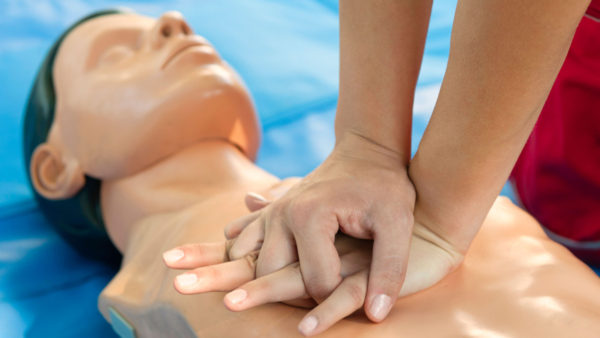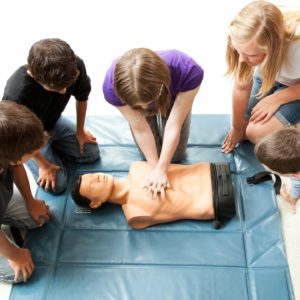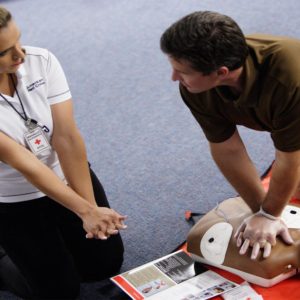Upon successful completion of both portions of the course, students receive a Heartsaver CPR AED course completion card, valid for two years.
After completing this course, students will be able to:
- Describe how high-quality CPR improves survival
- Explain the concepts of the Chain of Survival
- Recognize when someone needs CPR
- Perform high-quality CPR for an adult
- Describe how to perform CPR with help from others
- Give effective breaths by using mouth-to-mouth or a mask for all age groups
- Demonstrate how to use an AED on an adult
- Perform high-quality CPR for a child*
- Demonstrate how to use an AED on a child*
- Perform high-quality CPR for an infant*
- Describe when and how to help a choking adult or child
- Demonstrate how to help a choking infant*
- *Child/Infant Module is optional
In these busy times, some people prefer taking the first part of their Heartsaver CPR AED instruction in the blended learning format offered by the American Heart Association Heartsaver CPR AED. These courses are offered for initial or renewal training, and they have the same completion requirements that the classroom based equivalent courses do. All the blended learning options include access to the related E-textbook in the price of the course. Students who successfully complete Part 1 receive a certificate that allows them entrance into a skills practice and testing session. You must bring your certificate of completion of Part 1 to your skills session in order to receive your certification card. The online component of the course is only the first step in obtaining your Heartsaver CPR AED.
Heartsaver CPR AED Skills Session Course Audience
AHA Heartsaver CPR AED Courses are intended for Fortune 1500 companies and for employees in industries such as:
- security
- law enforcement
- state correctional facilities
- colleges and universities
- hospitality
- health and fitness
- property management
- construction
- occupational and environmental health and safety
- child care
- manufacturing
- education
- airline
any others where having a workforce of trained lay responders may prove invaluable for the safety of both customers and employees.
It is also appropriate for lay rescuers who may have a need to respond to an emergency in the workplace, and family members of patients at high risk for sudden cardiac death.




